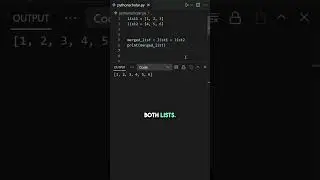Python's ROUND Trick!
Hey there, Python enthusiasts! Welcome to another exciting episode where we unlock the mysteries of Python's 'round' function. Ever noticed how Python sometimes rounds a decimal ending in .5 upwards, and other times downwards? 🎓🐍 Today, we demystify this enigma.
When rounding 1.5, Python goes up to 2. At first glance, this may lead us to think that Python always rounds up when the fraction is 0.5. But hold on! As we venture further, we see Python rounding 2.5 down to 2. What's going on? 🤔
In the riveting world of Python, it employs a system known as 'round half to even,' colloquially referred to as 'bankers' rounding.'🧐 This method minimizes bias when rounding off a series of decimals. When the fraction is precisely 0.5, it rounds to the nearest even number. Now, that's a neat trick to know! 🌟
Don't believe it? Let's take 3.5 and 4.5 as examples. Python rounds 3.5 up to 4, while 4.5 interestingly rounds down to 4. This strategy ensures we don't lean towards consistently rounding up or down, which over time could introduce statistical bias in data analysis. 📊
Python's round function isn't just about simple rounding; it's about providing accuracy and fairness in computations, especially when dealing with a large series of decimal numbers. It keeps your results as bias-free as possible over multiple calculations by adhering to the 'round half to even' principle. It's part of what makes Python such a powerful and trustworthy tool for scientific and financial computations. 🛠️
And there you have it, folks! We've cracked the secret of Python's round function together. The more you know about Python, the more you fall in love with its attention to detail. Python’s commitment to accuracy and fairness truly shines here. So, keep learning, keep exploring, and most importantly, keep coding! Dive deeper into Python's world and uncover its hidden treasures. Let's continue on this fantastic journey of Python discovery together. 🌟🔥
TLDR;
Welcome to this Python tutorial. Today, we're going to unravel how Python's round function decides whether to round up or down. Let's get started!
1- The Usual Assumption: Let's look at an example. If we round 1.5, Python returns 2. It seems like Python is simply rounding up when the fraction is exactly 0.5, doesn't it? However, that's not the full story.
2- The Unexpected Result: When we try to round 2.5, Python actually rounds down to 2. This is because Python uses a method of rounding known as "round half to even."
3- Round Half to Even Explanation: Also referred to as "bankers' rounding," this method aims to reduce bias when rounding a series of decimals. It rounds to the nearest even number when the fraction is exactly 0.5.
4- More Examples: When we round 3.5, Python rounds up to 4. But when we round 4.5, it rounds down to 4. This method ensures we don't consistently round up or down, which could introduce bias over time.
5- Rationale Behind Python's Round: Python's round function seeks to be as accurate as possible over multiple calculations. This is why it opts for "round half to even," which helps reduce any bias.
6- Mastering Python's Round Function: And there you have it! You've now unraveled the mystery behind Python's round function. As you continue your Python journey, remember to keep exploring, keep coding, and keep learning!
![[Overwatch] Overview Of New Map Coming Soon](https://images.videosashka.com/watch/PK9X0pkHsQ4)






























